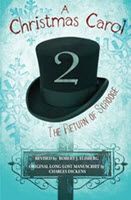|
The Huffington Post has just posted the first part of a very long, in-depth blockbuster investigation of Johnson & Johnson surrounding their development of an anti-psychotic drug, Risperdal. Titled, "The Credo Company," the piece is described as --"Over The Course Of 20 Years, Johnson & Johnson Created A Powerful Drug, Promoted It Illegally To Children And The Elderly, Covered Up The Side Effects And Made Billions Of Dollars. This Is The Inside Story." The story is written by Steven Brill, an acclaimed investigative reporter, and told in 15 parts. That's part of the fascinating aspect of this, creating a new form they're calling a DocuSerial. Let them explain what they mean -- The Johnson & Johnson Risperdal story is a complex, roller coaster tale. The details count. They are important in understanding the people and impulses behind the drugs we take. To tell that story in a way that is digestible but complete, The Huffington Post Highline and I are trying something new: a DocuSerial. It’s a reconstruction of an old story-telling genre that allows us to deploy the modern tools of digital communication to engage readers in old-fashioned, long-form feature journalism. The form works very well. Though the project is very long, the first section was (while long itself) very accessible and didn't take all that much time to read. It's also wonderfully formatted with clear links to supporting documents (that are themselves highlighted for the appropriate passages) and videos, along with a timeline running down the side of the page that can be clicked on, as well. Often when clicking on links in a document you lose your place in it, but here, new tabs tend to open in your browser, and you hold your place to return to. There are also little sidebar links off to the right side, which give background information on important players in the story -- when you click on them, the material overlays on the main window, but a big "X" appears to let you easily click out of it.
That's the form. But most important is the content. And the first segment was extremely well done. Interesting, well-written and richly documented. I figure to stick around and see how it develops. (It's worth noting to that the story makes clear -- and indeed says so specifically -- that at issue is not whether a drug is helpful to many, but causes problematic side-effects for a few, but rather the documented illegal efforts to get the drug on the market and to promote it to people for whom it was not intended or approved. That the company has paid $3 billion in lawsuits demonstrates that "illegal" is not subjective hyperbole. You can find the first part here. If you do read it, be sure to check the Letter from the Editors -- it's a link right at the top, underneath the title, and does a nice job explaining a slight history of the project Also, at the very end, after all the reader comments is a place to sign up for email reminders when the next part has been published.
0 Comments
Leave a Reply. |
AuthorRobert J. Elisberg is a political commentator, screenwriter, novelist, tech writer and also some other things that I just tend to keep forgetting. Feedspot Badge of Honor
Archives
June 2024
Categories
All
|
|
© Copyright Robert J. Elisberg 2024
|






 RSS Feed
RSS Feed